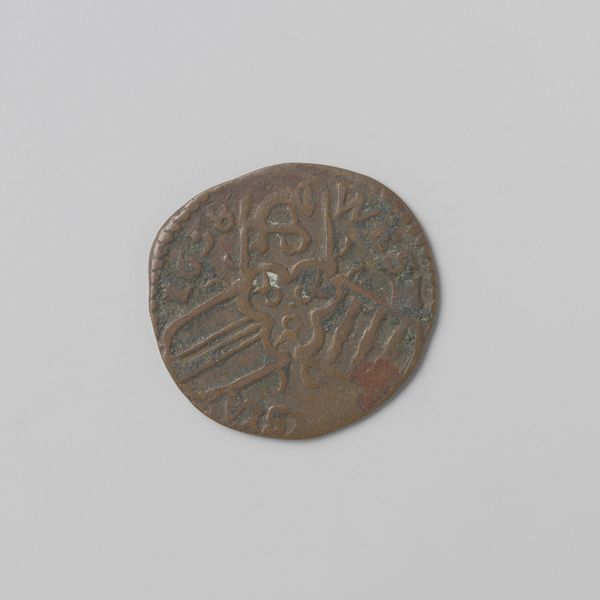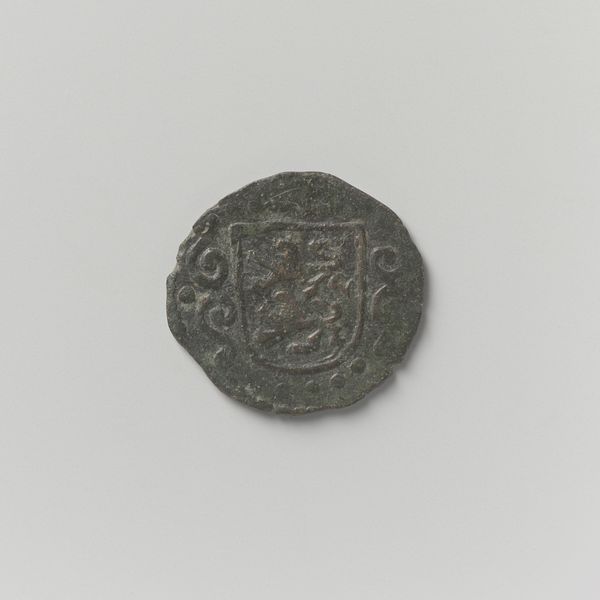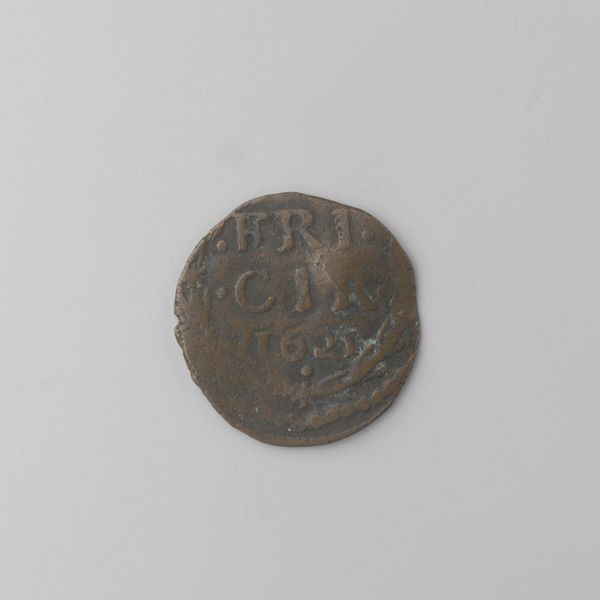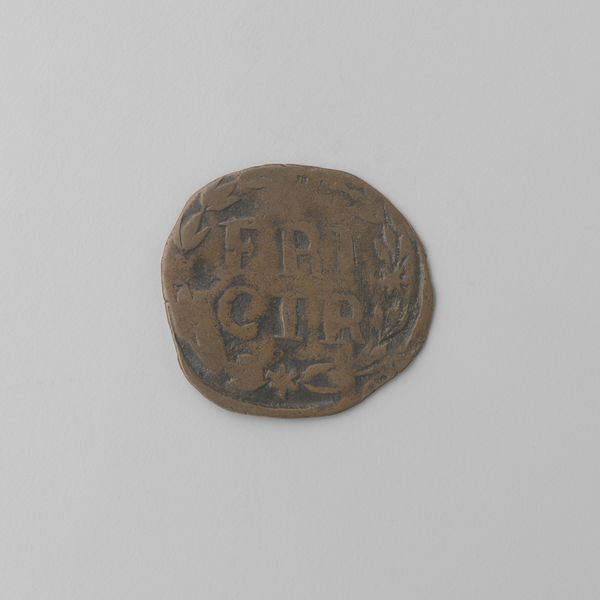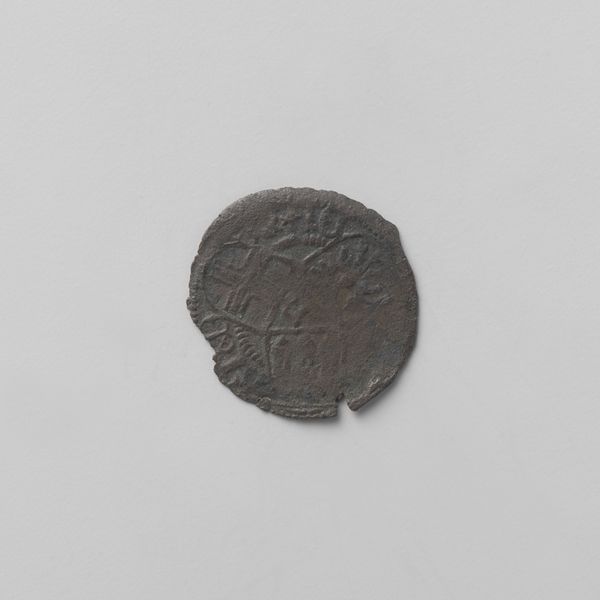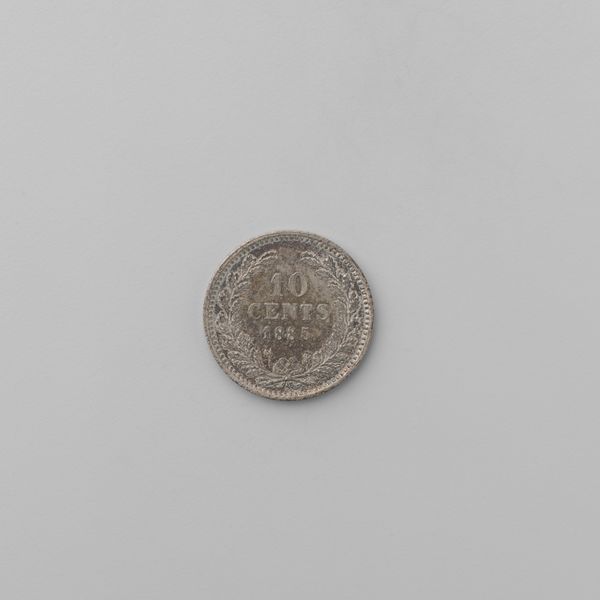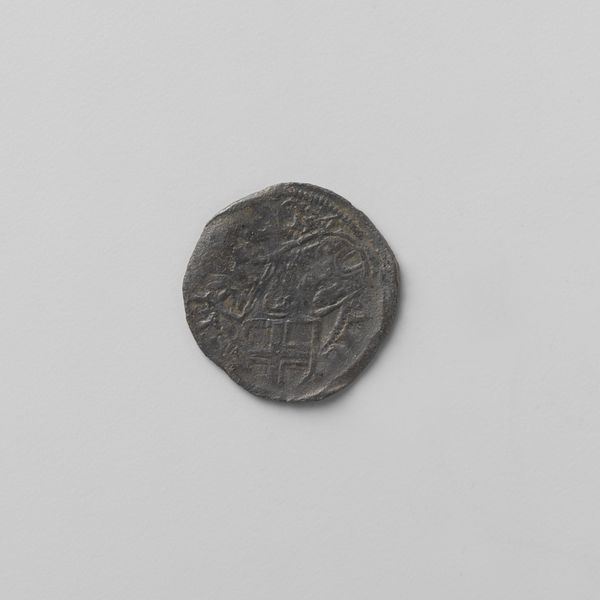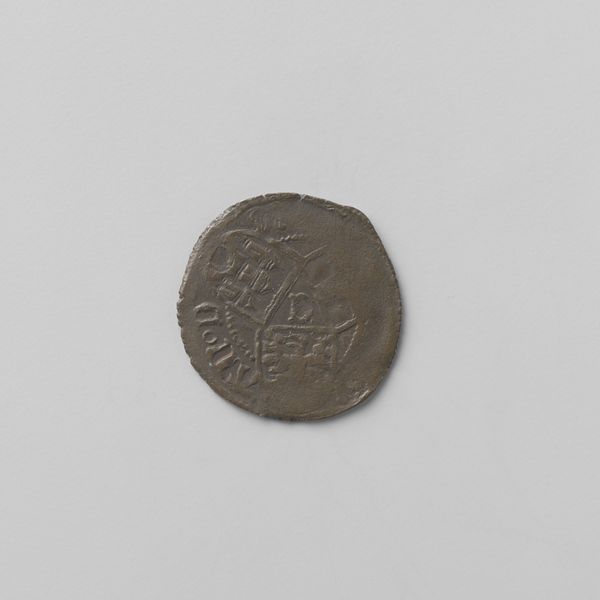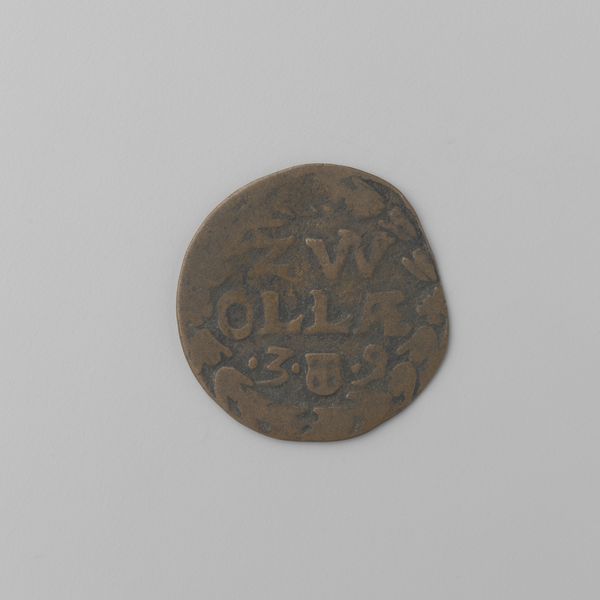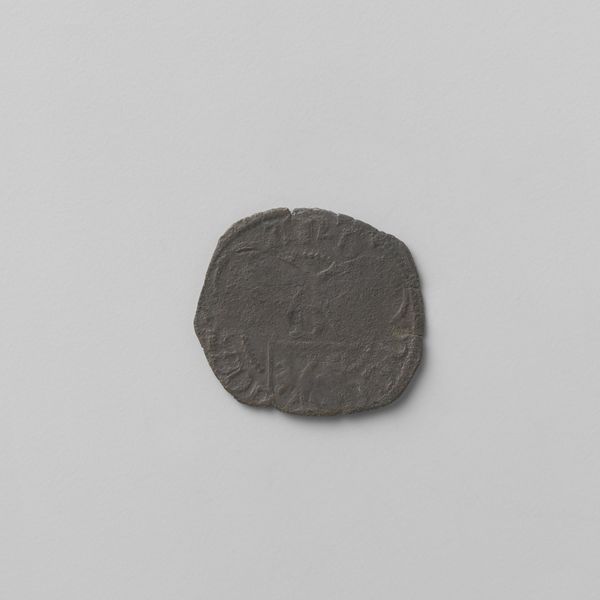
metal, relief, bronze
#
medieval
#
metal
#
relief
#
bronze
#
coin
Dimensions: diameter 2.0 cm, weight 1.87 gr
Copyright: Rijks Museum: Open Domain
Curator: Ah, this piece has so many stories tucked into it. What strikes you first about this Reckheimse duit of Ferdinand van Aspremont-Lynden? It dates back to sometime between 1636 and 1665. Editor: Immediately, it whispers of time worn, you know? Like a tiny, weathered face from another century. I imagine it clinking in someone's purse, feeling the rough touch of calloused fingers. Curator: Exactly! And coins, particularly from smaller regions, were important political tools. This bronze relief wouldn't just buy you bread. It announced power. Think about Ferdinand van Aspremont-Lynden, heer van Reckheim. Minting his own coinage declared a degree of autonomy and regional pride. Editor: Right, it's branding, early style! Look at that diamond shape inside and the delicate swirls around it. There's an almost playful, rebellious energy packed into this little thing. Was this common for this particular ruler or this region's coins? Curator: That ornate lozenge might echo his family's coat of arms—a claim to lineage, maybe even a wink at their territorial claims. What is more fascinating to me is the statement it makes within a chaotic geopolitical context, the Dutch Republic was at war with Spain. Each element serves a purpose beyond simple aesthetics. It shows his awareness to be taken as sovereign despite turmoil. Editor: I see, this era and object encapsulates the eternal tussle between asserting power and artistic flair. Was bronze the common metal of this particular coin's moment? Or could it reflect specific economics that reflect Lynden's Reckheim? Curator: Most "duits" were often copper or bronze to maintain the price equilibrium during the age, though sometimes these coins might have included a touch of silver. As time went on they sometimes grew debased as war put economic strain. But regardless, possessing a coin wasn’t just about value; it was carrying a miniature emblem of your liege lord! Editor: A tiny act of allegiance held right in your pocket. Thinking about this as an art piece, makes me want to rethink coins generally. Next time, when faced with coinage, I hope to appreciate what this duit teaches me, their symbolism is more than just what they buy, but what they represent. Curator: I love that. Coins are a currency of more than just money—they’re history in miniature. I leave with a newfound appreciation for our tiny coin and hopefully the listeners share our insight.
Comments
No comments
Be the first to comment and join the conversation on the ultimate creative platform.
